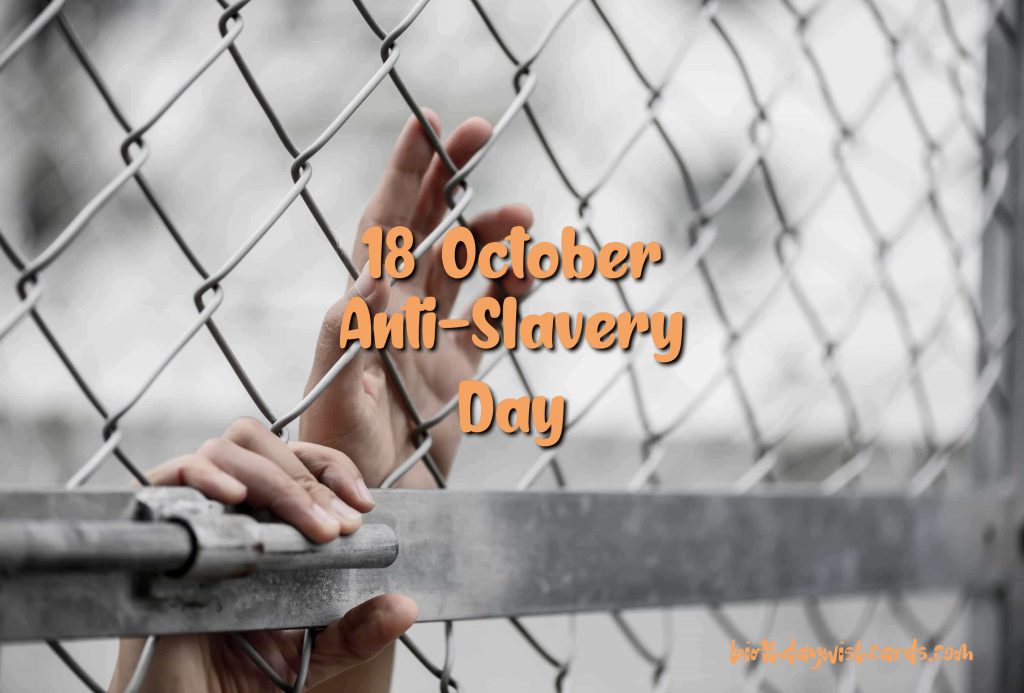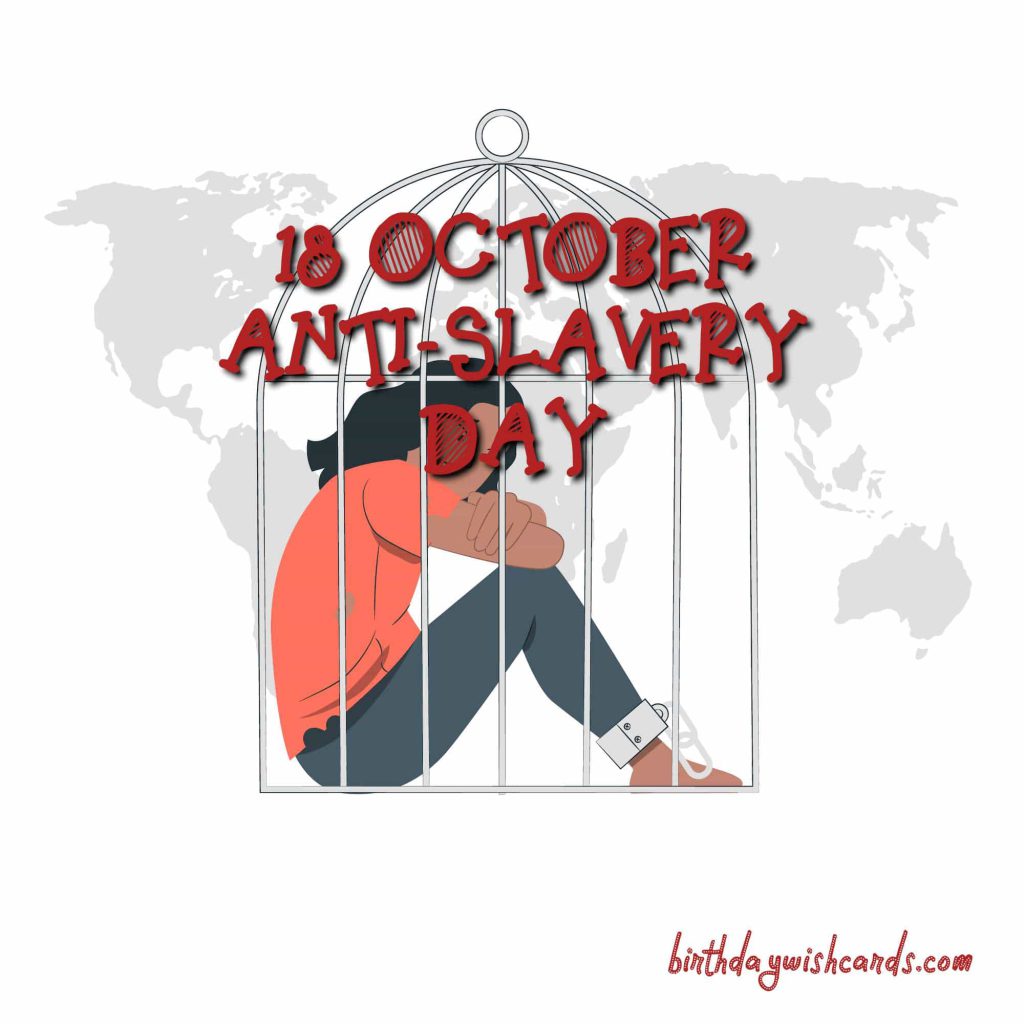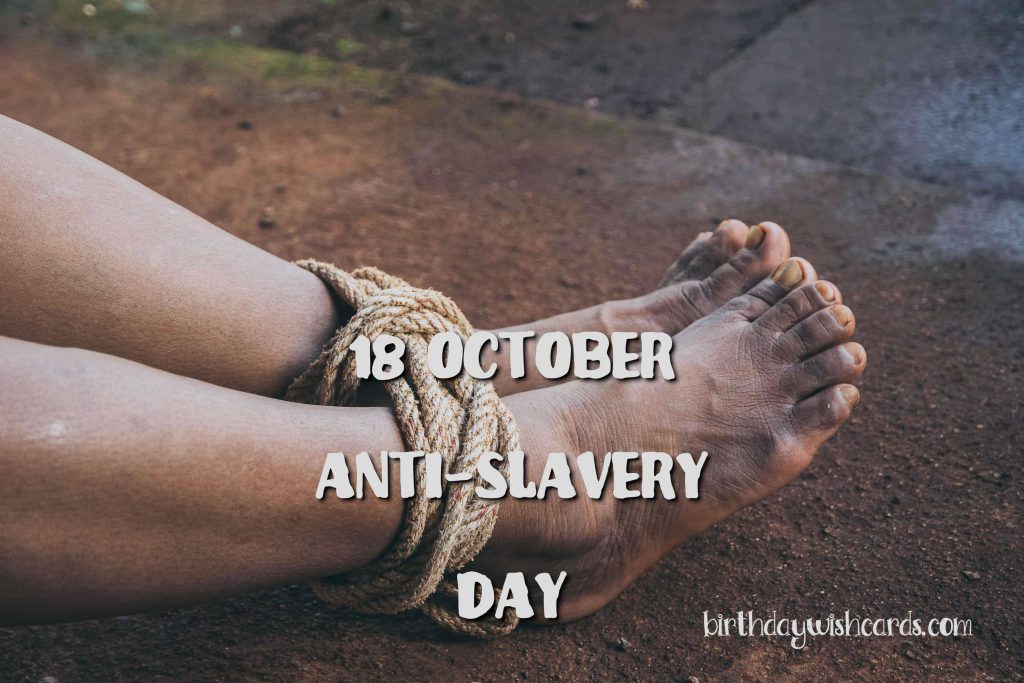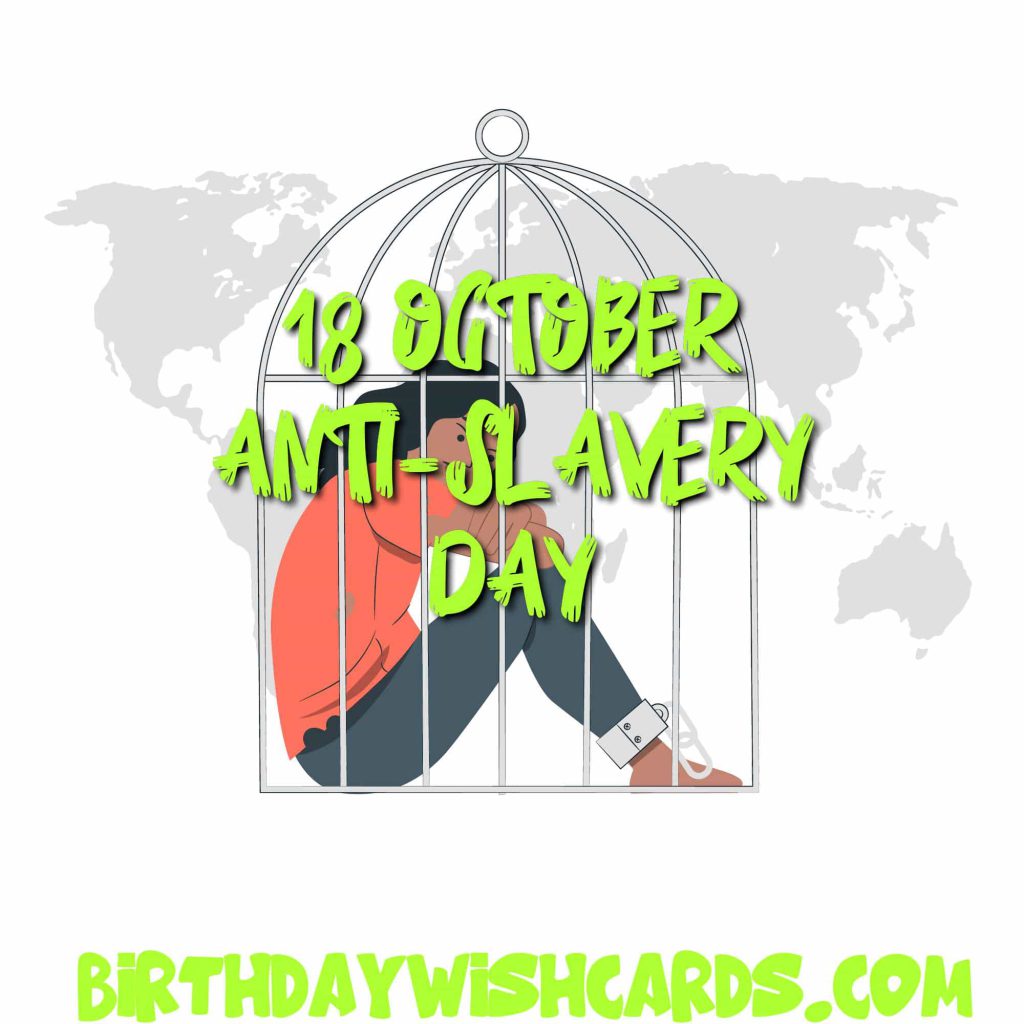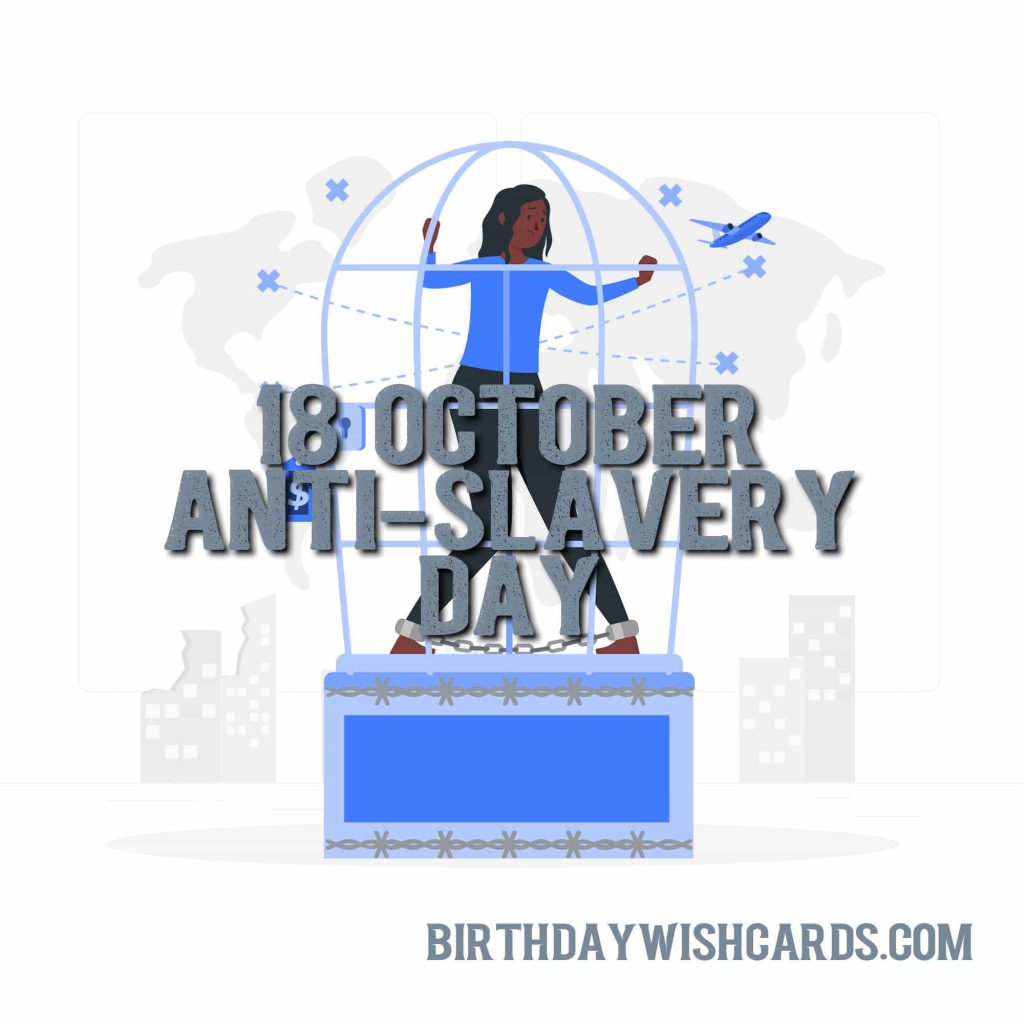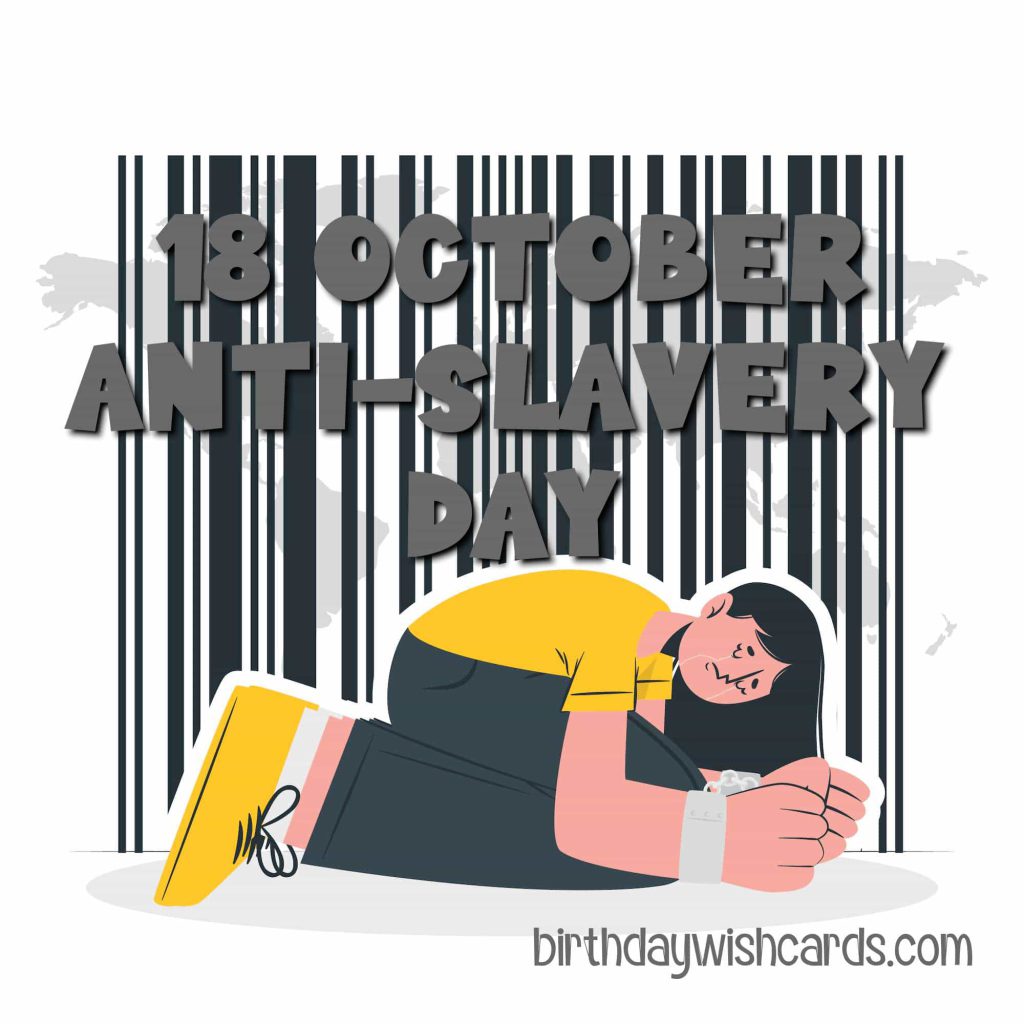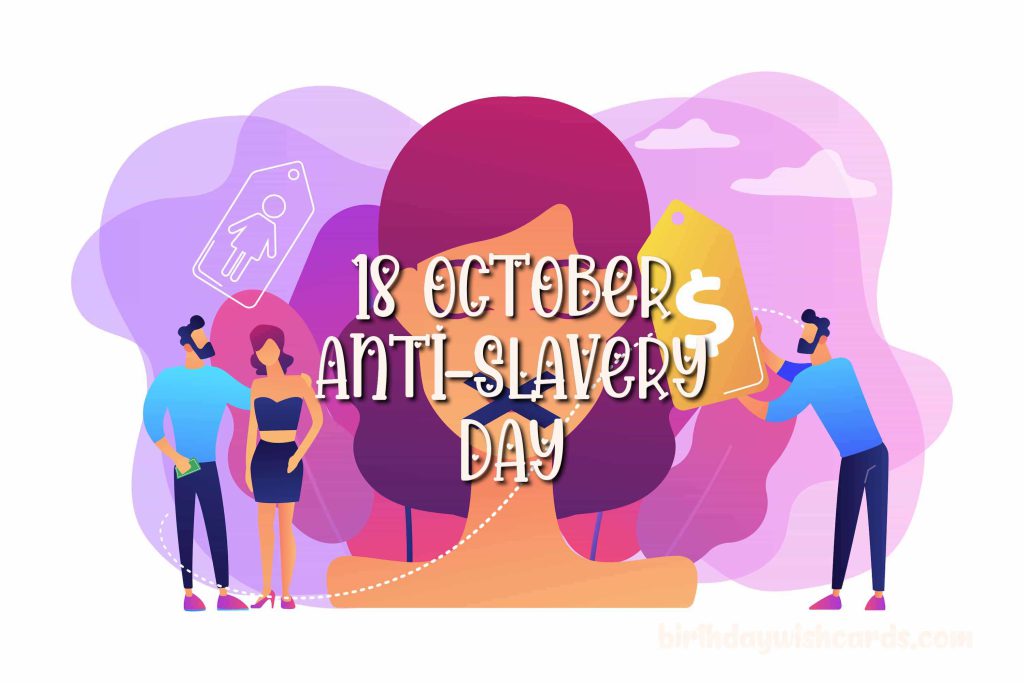18 October Anti-Slavery Day: Raising Awareness to End Modern Slavery
The Anti-Slavery Day Act and Its Purpose
The Anti-Slavery Day Act 2010 is a landmark piece of legislation passed by the UK Parliament to establish a national day dedicated to raising awareness about the urgent need to eradicate all forms of slavery, human trafficking, and exploitation. This day is observed annually on 18 October.
Anti-Slavery Day focuses on ending contemporary forms of slavery that persist worldwide, including human trafficking, sexual exploitation, the worst forms of child labor, forced marriage, and the recruitment of children for armed conflict.
Modern Slavery: Global Statistics and the Role of the International Labour Organization (ILO)
The International Labour Organization (ILO) estimates that over 40 million people globally are victims of modern slavery. While not a legal term, “modern slavery” is used to describe a range of exploitative practices such as forced labor, debt bondage, forced marriage, and human trafficking.
Modern slavery refers to situations where individuals cannot refuse or leave due to threats, violence, coercion, deception, or abuse of power. Additionally, more than 150 million children are engaged in child labor—nearly one in ten children worldwide.
To strengthen the global response, the ILO introduced a legally binding Protocol on Forced Labour, which came into force in November 2016, enhancing international efforts to eliminate these abuses.
Slavery has evolved and taken on new forms over time. While some traditional practices persist, new and often more insidious forms have emerged. The United Nations and other human rights organizations continue to document both age-old and modern manifestations of slavery, often rooted in discrimination against marginalized groups such as lower-caste communities, tribal minorities, and indigenous peoples.
Today, slavery can be found in various sectors, including domestic work, construction, agriculture, garment manufacturing, food production, and forced prostitution. Migrant workers are especially vulnerable to trafficking and exploitation for economic gain.
The Impact of Child Slavery
Globally, one in ten children is involved in some form of work, often for economic exploitation. This widespread child labor violates the Convention on the Rights of the Child, which protects children from economic exploitation and prohibits work that is hazardous or interferes with their education or development.
The Protocol to Prevent, Suppress and Punish Trafficking in Persons, Especially Women and Children defines trafficking as the recruitment, transportation, transfer, harboring, or receipt of persons through coercion, force, or other means for the purpose of exploitation. Exploitation includes activities such as prostitution and other forms of sexual exploitation, forced labor, slavery or similar practices, servitude, and organ removal.
Importantly, the consent of the trafficked individual is irrelevant; if the victim is a child, trafficking is a criminal offense regardless of whether force was used.
Images Depicting Anti-Slavery Initiatives and Awareness
The following images illustrate global efforts and campaigns to raise awareness and combat modern slavery:
Understanding Modern Slavery: Types and Causes
Modern slavery encompasses a wide range of exploitative practices. The most prevalent types include:
- Forced Labor: People compelled to work against their will under threat or coercion.
- Debt Bondage: Individuals trapped in labor by debts that are impossible to repay.
- Human Trafficking: The illegal trade and movement of people for exploitation.
- Forced Marriage: Marriages conducted without consent, often involving minors.
- Child Labor: The employment of children in dangerous or exploitative work.
Poverty, lack of education, discrimination, conflict, and weak law enforcement are among the root causes of modern slavery. Vulnerable populations—such as migrants, minorities, and children—are disproportionately affected.
Global Efforts to Combat Slavery and Human Trafficking
The international community is actively working to address slavery through legislation, awareness campaigns, and enforcement. Key initiatives include:
- International Conventions and Protocols: Agreements such as the ILO Protocol on Forced Labour and the UN Protocol to Prevent, Suppress and Punish Trafficking in Persons set global standards for fighting slavery.
- National Legislation: Countries enact laws criminalizing slavery and trafficking, with Anti-Slavery Day helping to highlight these efforts.
- Awareness and Education: Campaigns inform the public about modern slavery and how to recognize and report it.
- Support Services: Victims receive rehabilitation, legal aid, and protection through specialized programs.
How You Can Help End Modern Slavery
Everyone can play a part in the fight against slavery. Here are some ways to contribute:
- Educate Yourself and Others: Learn about modern slavery and share information within your community.
- Support Ethical Businesses: Choose products and services from companies committed to fair labor practices.
- Report Suspicious Activities: Contact authorities if you suspect human trafficking or exploitation.
- Volunteer or Donate: Support organizations working to rescue and rehabilitate victims of slavery.
The Importance of Anti-Slavery Day
Observed every 18 October, Anti-Slavery Day plays a vital role in spotlighting the ongoing challenges of modern slavery. It serves as a reminder that despite legal advances, millions remain trapped in exploitative conditions.
This day encourages governments, organizations, and individuals to renew their commitment to ending slavery in all its forms. Through education, advocacy, and direct action, we can work toward a world where freedom and dignity are guaranteed for all.
Conclusion
Modern slavery is a complex and persistent global issue affecting millions, including vulnerable children. The Anti-Slavery Day Act 2010 and the annual observance of Anti-Slavery Day on 18 October underscore the importance of awareness and action. By understanding the scale and impact of slavery, supporting international initiatives, and taking individual action, we can help eradicate slavery and protect human rights worldwide.
For more information on combating human trafficking and forced labor, visit the United Nations Office on Drugs and Crime (UNODC) and the Celebrating Ethiopian Patriots’ Victory Day – May 5

